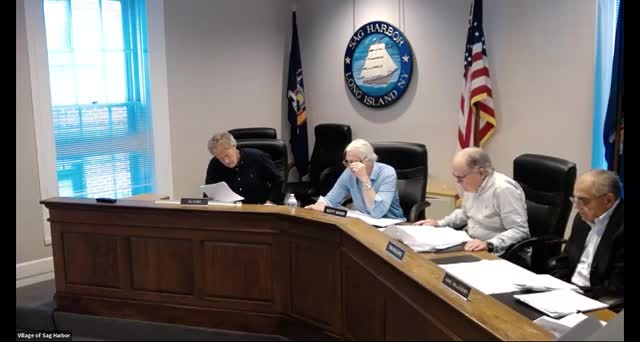Homeowner fights for solar panels in historic district
June 20, 2024 | Sag Harbor, Suffolk County, New York

This article was created by AI summarizing key points discussed. AI makes mistakes, so for full details and context, please refer to the video of the full meeting. Please report any errors so we can fix them. Report an error »

In a recent government meeting, discussions centered around two key properties: 29 Harding Terrace and 152 Division Street, with a focus on variances related to construction and environmental concerns.
At 29 Harding Terrace, board members addressed minor variances concerning a retaining wall. The discussion highlighted that the environmental implications were primarily the concern of the harbor committee, and no significant issues were raised by the board members. The motion to close the public hearing was unanimously approved, followed by a decision to uphold the attorney's recommendations regarding the property.
The meeting then shifted to 152 Division Street, where a resident presented a proposal for solar panels on their home. The resident emphasized the importance of balancing environmental sustainability with the preservation of the historic district. They argued that the current code is overly restrictive, making it difficult for homeowners to implement solar energy solutions. The resident noted that their proposal included sections of the roof that would be minimally visible from the street, aligning with federal guidelines that encourage solar installations in historic areas.
Board members expressed concerns about the implications of granting a variance, particularly regarding the potential for setting a precedent that could undermine existing codes. They acknowledged that while the proposal was well-intentioned, the board had never previously approved a solar project in the historic district. The resident countered that many neighbors supported the initiative, and they highlighted the need for flexibility in the code to promote sustainable practices.
The discussion also touched on the challenges of alternative energy solutions, such as geothermal systems, which the resident had explored but found unfeasible due to property constraints. The board's deliberations underscored the ongoing tension between maintaining the character of historic districts and adapting to modern energy needs.
As the meeting concluded, the board members recognized the importance of revisiting the solar code and the potential for future discussions to create a more accommodating framework for renewable energy initiatives in the community.
At 29 Harding Terrace, board members addressed minor variances concerning a retaining wall. The discussion highlighted that the environmental implications were primarily the concern of the harbor committee, and no significant issues were raised by the board members. The motion to close the public hearing was unanimously approved, followed by a decision to uphold the attorney's recommendations regarding the property.
The meeting then shifted to 152 Division Street, where a resident presented a proposal for solar panels on their home. The resident emphasized the importance of balancing environmental sustainability with the preservation of the historic district. They argued that the current code is overly restrictive, making it difficult for homeowners to implement solar energy solutions. The resident noted that their proposal included sections of the roof that would be minimally visible from the street, aligning with federal guidelines that encourage solar installations in historic areas.
Board members expressed concerns about the implications of granting a variance, particularly regarding the potential for setting a precedent that could undermine existing codes. They acknowledged that while the proposal was well-intentioned, the board had never previously approved a solar project in the historic district. The resident countered that many neighbors supported the initiative, and they highlighted the need for flexibility in the code to promote sustainable practices.
The discussion also touched on the challenges of alternative energy solutions, such as geothermal systems, which the resident had explored but found unfeasible due to property constraints. The board's deliberations underscored the ongoing tension between maintaining the character of historic districts and adapting to modern energy needs.
As the meeting concluded, the board members recognized the importance of revisiting the solar code and the potential for future discussions to create a more accommodating framework for renewable energy initiatives in the community.
View full meeting
This article is based on a recent meeting—watch the full video and explore the complete transcript for deeper insights into the discussion.
View full meeting
